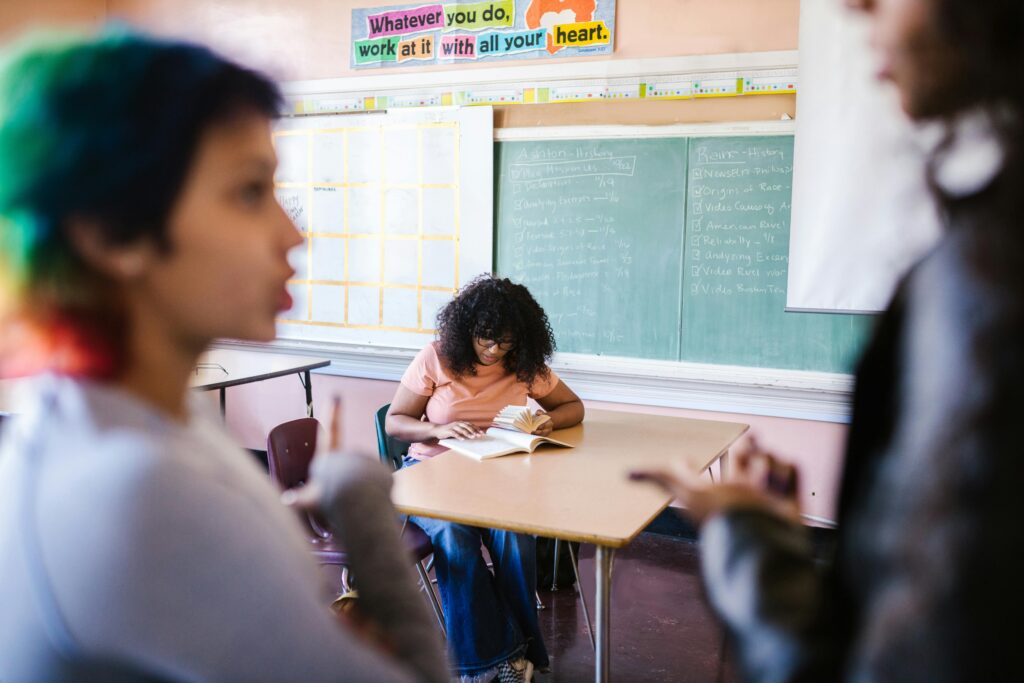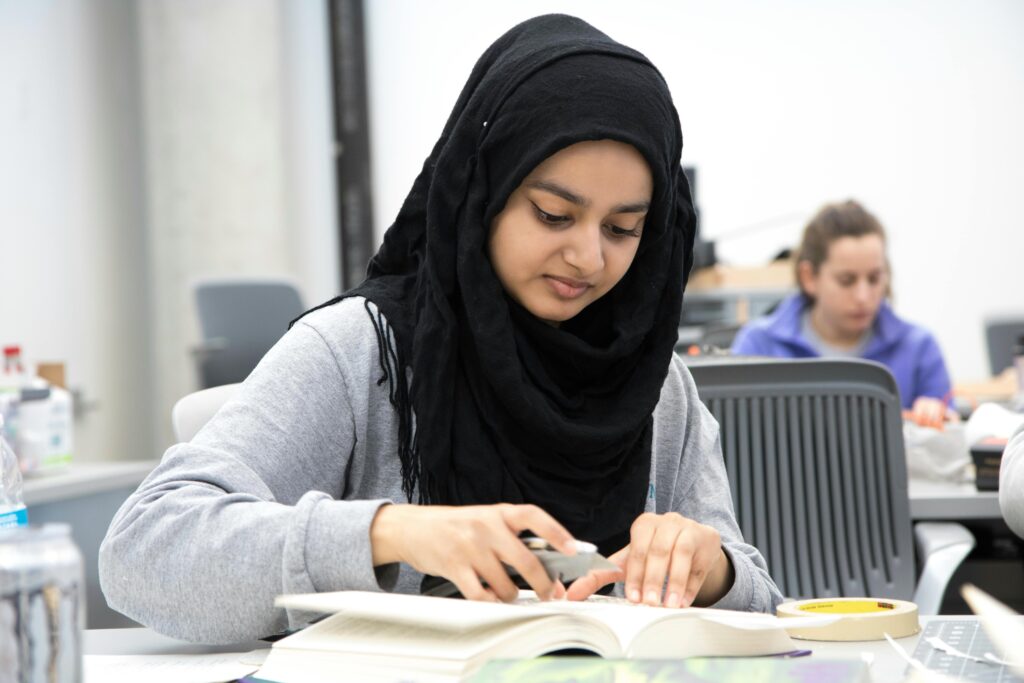School Administrators and Teachers Are Contributing to The Problem
By Marium Zahra
Jan/Feb 25

After Sept. 11, 2001, Muslims across the country faced hate crimes and bigotry. There was an increase in racist attacks, and xenophobia against people who identified as Muslim, came from Muslim countries, or simply looked brown.
Consequently, the years following 9/11 have been a time of distress, fear, and discrimination for Muslims. But in recent years, as blatant Islamophobic bigotry is correctly acknowledged as socially unacceptable, this open discrimination has been transformed into microaggressions across the country, especially in school classrooms.
Microaggressions are a form of inconspicuous discrimination. These are behaviors, whether intentional or unintentional, that communicate hostile or negative attitudes toward culturally marginalized groups. In classrooms, microaggressions can look like small jabs or pointed comments singling out the race, religion, or ethnicity of a student or a group of students. These remarks often stem from essentializing misconceptions, presumptions, and/or stereotypes.
With the rise of Islamophobia in recent months due to the ongoing genocide in Palestine, Muslim high school students living in the West feel the effects in their everyday lives. Many no longer view school as a safe place to learn and grow. Instead, classrooms are tainted with discrete discrimination from peers and sometimes even administration and teachers. For example, Muslim students, especially women and girls across the country, deal with a condescending view of Islam that casts them as oppressed and forced by religious commandment. These stereotypes are both deeply harmful and based on incorrect, orientalist tropes.
“My peers have made fun of me for practicing salah and for wearing the hijab, mocking my religious practices,” said Homa Massood, a senior at Skyview High School in Billings, Montana. “Some self-proclaimed ‘concerned’ teachers have openly criticized my belief system, calling practices like wearing the hijab and fasting during Ramadan ‘barbaric.’”
Hana Haque, a senior at Folsom High School in Folsom, California said she has also been attacked with religiously-motivated actions and comments that seek to demean her faith as a Muslim woman.
“I am more often the target of sexual or lewd comments during school,” she said. “[A male student] taller and bigger than me [grabbed] my arm as I walked by his friends and his table during lunch and [called] me ‘cute’ and [asked] for my number. I wear hijab and have never seen them before in my life. I looked visibly uncomfortable.”
For some Muslim students, like senior Suleikha Hakim of Columbus, Ohio, academic spaces are more unforgiving when they make mistakes. Discrimination is something they have become used to.
“I can feel how differently [students] treat me compared to others,” Hakim said. “People will act normal around other people, but when it comes to me, [they’re] harsher.”
California sophomore Syeda Ali admitted she’s used to this treatment. “Peers and elders often make these religious jabs at me, but I’ve become desensitized,” she said.
Ali also noted the familiar feeling of being a Muslim in America, as though you should be ashamed of your culture and religion and should feel compelled to suppress your origins to feel accepted and included.
“I was targeted as a victim of bullying at a young age due to my appearance and identity,” she said. “Growing up, there wasn’t much I could do as. . . I was pretty much an outsider.”
Some students said that they’ve been classified with incorrect racial categories, ethnicities, or nationalities due to stereotypical assumptions from authority figures. This type of racism, whether intentional, is a result of the ignorance that many Americans have regarding Islam and/or Muslim culture and tradition. This discrete discrimination is also primarily rooted in the way Muslims have been either misrepresented or completely ignored by mainstream media.
“Teachers and administrators often reference me in discussions about Middle Eastern countries I’m not from, like Iran or Saudi Arabia,” said Massood. “A few have even made comments about me being from ‘the desert’.”
When school officials incorrectly generalize Muslim students, it demonstrates to other students that they can make the same ignorant or harmful assumptions, all of which contribute to making the classroom an unsafe or an unwelcoming place for Muslims.
As a Pakistani American, Muslim high school student from Texas, I know firsthand how damaging microaggressions can be, and how normalized they have become. While working on a portrait of my father in class in December of 2023, an instructor approached me and asked if I “was drawing Hussein” with no other context. At the time, I didn’t even know how to react, so I brushed it off. Later, I realized my teacher had just said the first brown name he could think of.
Throughout ninth grade, I was threatened by school coaches during Ramadan while participating in my school’s volleyball program. On an out-of-season conditioning day, I let my coach know that I could not run because I was fasting. Instead of allowing me to sit out, he implied that if I didn’t play, some of the newer girls would take my spot.
This experience showed me that my identity as a Muslimah was not respected in my school environment. And I am far from alone in these experiences. High school students across the country say that microaggressions take a toll on both their mental health and their ability to perform in school.
“The constant mockery and disrespect made me feel isolated, misunderstood, and unwelcome in spaces that should have been supportive,” said Massood. “When Muslim students are constantly questioned or belittled for their beliefs, practices, or appearance, it sends the message that their identity is something to be scrutinized.”
Haque agreed with this sentiment. “They repress Muslim students’ personalities and silence their voices. Muslim students won’t be as comfortable if they’re constantly attacked in school,” she said.
While microaggressions might be brushed off as harmless by teachers, administrators, or other school officials, they should not be overlooked given their detrimental effects on Muslim students. These actions make students feel like they shouldn’t participate in class discussions, that their opinions don’t matter, or that they simply don’t belong in an American classroom. Most of all, microaggressions against school-aged Muslim Americans make students feel like outcasts in environments that should be inclusive. Worse still, silent discrimination of this kind makes students feel like they can’t respond, fight back, or stick up for themselves out of fear of facing further discrimination or being labeled as overly sensitive.
“When I reported the incident to my teacher, rather than receiving support or intervention, I was told to ‘get thicker skin.’ This lack of support from school staff only heightened my sense of vulnerability and fear for my safety as a Muslim student,” said Massood.
Combating Microaggressions Against Muslim Students

To make matters worse, in 2024, Republican lawmakers in Florida, Texas, Tennessee, and North Carolina introduced anti-diversity legislation designed to repeal protections for vulnerable groups like Muslim Americans throughout the American school and university system. Predictably, the result of this legislation was that discrimination against marginalized students increased throughout the year. Now, more than ever, we must combat microaggressions against Muslim Americans in our schools.
Educators can help by promoting diversity and inclusivity inside their classrooms instead of ignoring or suppressing racial, or religious, or ethnic differences among the student body. Educators should foster an environment where every student feels like their cultural, linguistic, and religious backgrounds are recognized, instead of ignored.
With the recent rise of anti-Critical Race Theory laws and book bans, it is also important to allow students to have open discussions in the classroom. Students should never be silenced for speaking out about their culture. Schools should diversify the curriculum in a way that doesn’t whitewash or antagonize the history of Muslim countries or overlook the unique contributions made by Muslim Americans. Teachers should discuss the practices and beliefs inherent to Islam while also identifying what microaggressions look like in order to reduce these occurrences and the harm they cause. Most importantly, schools should give students the ability and confidence to take action against discrimination instead of brushing off their experiences.
“Having a classroom that places diversity and inclusivity at the foundation is paramount. Students need to know that they are valued in their classes. It makes them feel seen, heard, and safe,” explained Rebecca Prado, an educator from El Paso, Texas.
Microaggressions against Muslim students have been prominent and normalized in classrooms for far too long. The time to end discrimination is now.
Marium Zahra is a 16-year-old independent journalist working from the Frontera in El Paso, Texas. Marium works with local magazines, nonprofits, anthologies, and organizations that protect social justice. Her work has been seen in Business Insider, Yes!, The Nation, PrismReports, Chalkbeat, The Progressive Magazine, El Paso City Magazine, and more.
